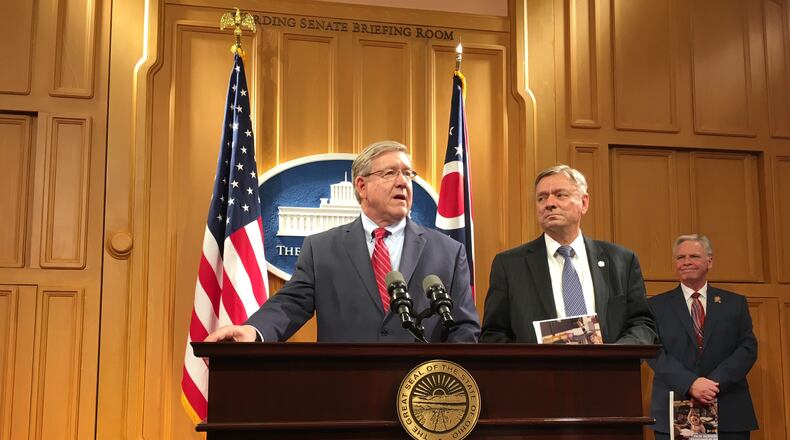“The time is right. The need is urgent. The plan is ready,” said Patterson, a former history teacher. “We ask that you join us.”
RELATED: Task force studied impact of poverty on schools
The bipartisan Fair School Funding Plan calls for:
— establishing how much it costs to educate the average student in a typical school district;
— determining the best teacher:student ratio for each grade level;
— funding high quality preschool for all economically disadvantaged 4-year-olds;
— providing a technology device for each student;
— determining the local share of funding based on the community’s property wealth and income;
— providing additional state funding of $422 per student living in poverty, up from the current $272; and
— increasing funds for special education students.
RELATED: How does Dayton Public Schools spend its money?
Cupp and Patterson said the plan would fund charter school and voucher school students directly, rather than having the funding pass through local school districts.
Patterson said he hoped the plan would be approved for a four-year phase-in, and emphasized that the group is still working on school funding details, after finding some answers “elusive.” Cupp said they would propose a guarantee where no district would receive less funding in the first year of the plan than they are receiving this year.
Cupp said the group hopes to end the “funding cap” system, where some districts did not receive as much state money as the pure formula said they should.
The plan is the result of 15 months of work with educators, legislators and school finance experts.
RELATED: How did local schools fare on the state report card?
Ohio’s current school funding system relies on a combination of local property and income taxes, state money, lottery profits and federal funds. It is a convoluted system packed with nuances and caveats.
“No one can explain the formula we have now — almost no one,” said Mike Sobul, treasurer of Granville City Schools.
The state share distributed to Ohio’s 610 school districts is about $10.5 billion, including nearly $1 billion for approximately 370 charter schools, according to the Ohio Department of Education. How much a district receives is based primarily on student enrollment and property wealth of a district.
Higher-wealth districts get less state aid, while poorer districts depend heavily on state funding.
In 1991, the Ohio Coalition for Equity and Adequacy of School Funding filed suit in Perry County on behalf of student Nathan DeRolph, alleging that the state failed to provide adequate money for an “efficient” education system, which is required by the Ohio Constitution.
In 1997, the Ohio Supreme Court ruled that the school funding system was unconstitutional and ordered the state to fix it. Lawmakers added money and made minor changes but didn’t substantially reform the system. The high court ruled in 2000, 2001 and 2002 that the system remained unconstitutional.
EDUCATION: More leaders criticize state takeover law for schools
Asked Monday whether he believed the new proposal would meet constitutional requirements, Cupp said yes, that it would meet all of the standards of the DeRolph court decisions.
Two groups that often disagree on education policy – the Ohio Education Association and the Buckeye Institute – both commended the research and effort from Cupp and Patterson’s workgroup, but said work remains to settle on an effective funding formula.
OEA, the largest teachers union in the state, called the current school funding formula “a patchwork of Band-Aids.”
“It does not provide adequate funding, nor is it driven by what constitutes a high-quality education,” said OEA President Becky Higgins. “OEA believes that Ohio must enact a student-centered formula that is fair, adequate and predictable and that ensures that all students have the resources to succeed, regardless of where they live or their family’s income.”
The Buckeye Institute – a conservative think tank – questioned whether the plan would offer families flexibility to find the right school for them, or would contribute to more positive academic outcomes for students.
“Increasing government spending, without addressing critical underlying reforms to the entire education system, is a recipe for higher taxes with more students continuing to fall behind,” said Greg Lawson, research fellow at the Buckeye Institute.


